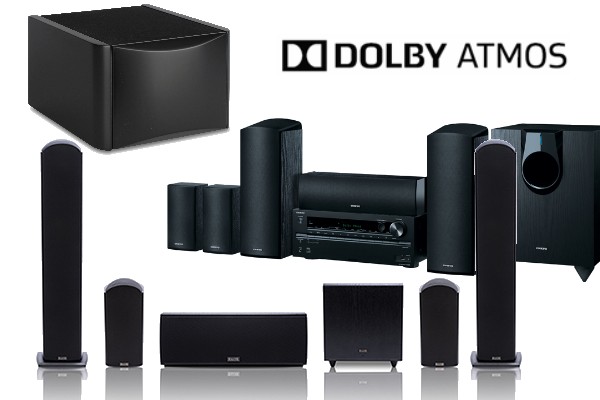advertisement
How to set up surround sound speakers to TV
Dolby says that audio accounts for 50 percent of the cinema experience so you’ll want to get a nice surround…

Dolby says that audio accounts for 50 percent of the cinema experience so you’ll want to get a nice surround sound system set up in your home to get the most out of all the films and TVs you’re watching. Here’s how to set up surround sound in your living room.
Assuming that you’ve bought a surround sound system or you’re thinking of buying one and want to know how it fits into your room, our guide will give you an idea. Of course, there are many different speaker systems available on the market so this is a one-size-fits-all guide.
We’re talking about a typical room and will try and advice for some tricky situations too. We’re also looking primarily at the most common type of surround sound which is 5.1 rather than 7.1 or 9.1 – the first number is the amount of speakers and the second is the amount of bass subwoofers. Most DVDs, Blu-ray discs and streaming services like Netflix support 5.1 surround but few support 7.1 or even 9.1.
advertisement
How to set up a surround sound system
We’re not going to be talking you through things like plugging in cables and the like, rather focusing on speaker placement which is arguable the most important thing for surround sound. We’re using Dolby’s suggested positioning. Follow the manual supplied for other specific set up details as they will vary.
As with any audio setup there’s a ‘sweet spot’ where the sound experience is at its best. For a home surround sound system, this is typically the middle of your sofa, assuming your TV is directly in front at a suitable distance.
Centre channel
Let’s start with the centre channel, which is mainly used for things like speech. You’ll want to place this directly in front of the sweet spot we mentioned, so ideally underneath your TV in line with the centre.
advertisement
Front speakers
Next up is the front speakers (left and right) which make up large part of a 5.1 system in terms of the way the audio is mixed. You’ll want these either side of the TV, ideally at head height, angled at 22 degrees from the centre speaker.
Rear speakers
The rear speakers, also known as satellites, are what really give you the extra sense of immersion when a helicopter flies into the scene from behind you or bullets really sound like they are just missing your head.
You’ll want to place these directly to the sides of your sweet spot at 90 degrees to that centre line. This probably means you need stands or to wall mount them depending on your room. If it’s too difficult to place them to the sides then behind, perhaps on a windowsill or bookshelves, will still give a good surround sound effect. In this case, angle them in towards the sweet spot like the front speakers – see the 7.1 guide below.
advertisement
Subwoofer
Last but not least is the subwoofer which is what provides the rumbling bass for effects like a thunderstorm or the sound of a tank driving past, you get the idea. Placement of this is less critical so put it where there is space, but ideally to either side of your TV stand.
7.1 surround sound
If you have a 7.1 surround sound system, this means you’ll have two additional satellite rear speakers and you’ll need to place these behind the sweet spot. Ideally place them at 135 degrees from the centre line.
If you’re struggling with placement of 5.1 rear speakers, place them like this to start with but don’t be afraid to make small tweaks in placement to see if you can improve the sound. You should also make sure all speakers, bar the subwoofer, have a clear path to your sweet spot as you don’t want anything to block the sound. If you have a Sonos system make sure you try out the Trueplay tuning feature in the app.